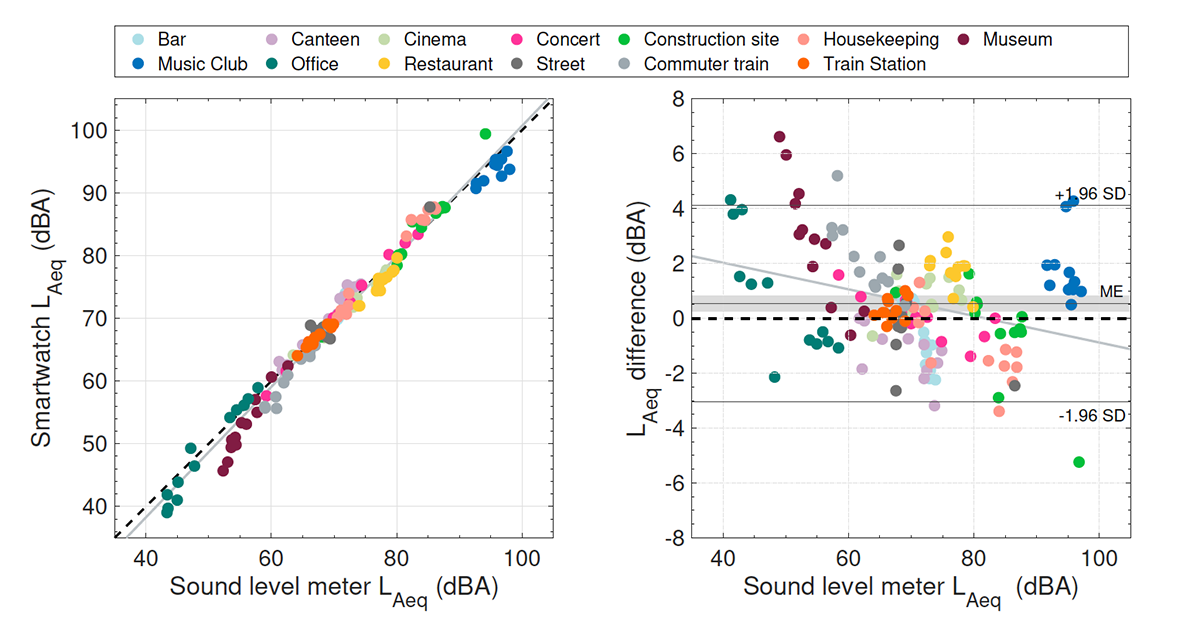2022/03/25 | Research | Rehabilitation & Neural Engineering
Measuring daily noise exposure with smartwatches
Loud noise at work or during leisure time can lead to noise-induced hearing loss or tinnitus. However, monitoring by professional sound level systems is not practical in everyday life. The Hearing Research Lab of the ENT Department at the Inselspital and the ARTORG Center therefore conducted a study to determine how well conventional smartwatches are suited to monitoring ambient noise. The measurements of the smartwatch proved to be sufficiently accurate to warn of hazardous ambient noise.
 Left: Scatter plot comparing sound pressure levels between the sound level meter and the smartwatch. Right: Bland-Altman plot using the sound level meter as reference. In both plots, the gray lines represent the least-squares regression line. The measurement settings are color encoded.
(https://doi.org/10.3389/fneur.2022.856219)
Left: Scatter plot comparing sound pressure levels between the sound level meter and the smartwatch. Right: Bland-Altman plot using the sound level meter as reference. In both plots, the gray lines represent the least-squares regression line. The measurement settings are color encoded.
(https://doi.org/10.3389/fneur.2022.856219)
The study authors recorded A-weighted equivalent continuous sound pressure levels (LAeq) and compared the measurements between a professional sound level meter and a popular smartwatch. Noise exposure was assessed in 13 occupational and recreational settings, covering a large range of sound pressure levels between 35 and 110 dBA.
Although the smartwatch underestimated sound levels by 0.5 dBA and decreased sampling rate with lower sound pressures, its overall assessment of ambient noise was sufficiently accurate and reliable to improve awareness of hazardous noise levels in the personal environment or to perform clinical evaluation studies. The researchers are convinced that smartwatches will play an important role in monitoring personal noise exposure and provide a widely available and cost-effective measure for otoprotection. In addition, smartwatch could become useful in the clinical follow-up of patients with tinnitus and vertigo, a topic the research group is currently working on.